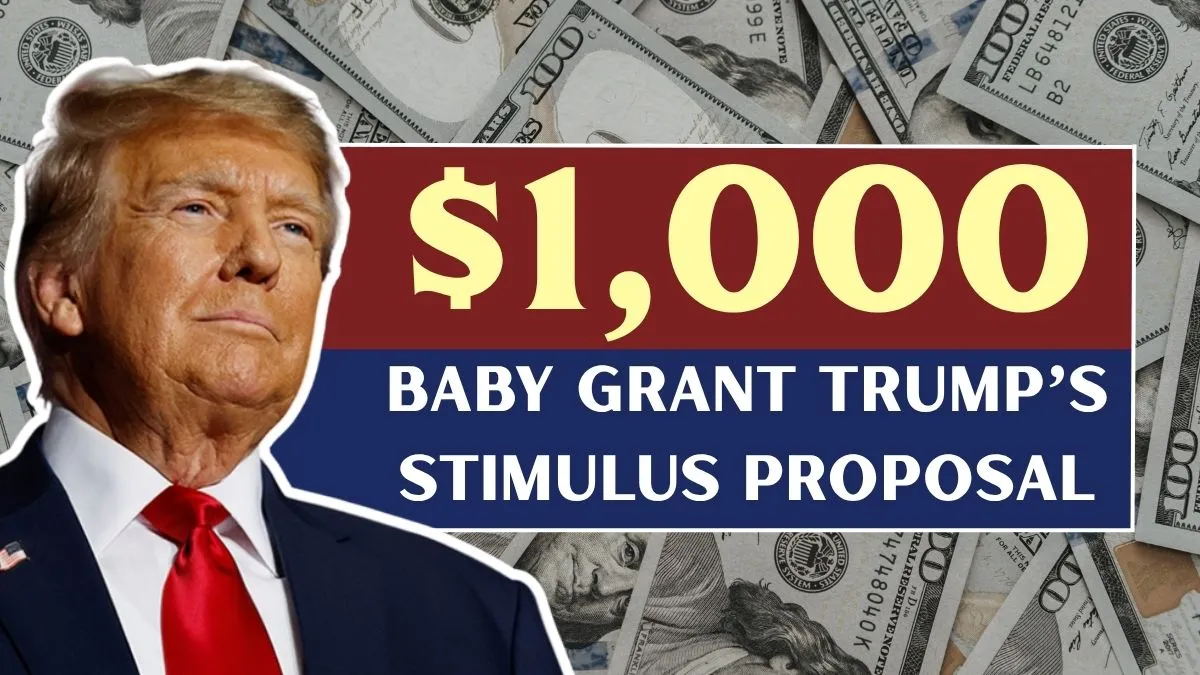Join on WhatsApp
Get the latest updates directly on WhatsApp – motivation, news & more!
President Donald J. Trump’s administration has unveiled one of the most ambitious family-centered investment programs in recent U.S. history — the $1,000 Baby Grant, introduced through the One Big Beautiful Bill Act (OBBBA). Signed into law on July 4, 2025, this policy aims to strengthen families, stimulate long-term economic growth, and encourage financial independence for America’s next generation.
Nicknamed the “Big Beautiful Bill,” this legislation introduces “Trump Accounts,” a tax-free savings model that gives every newborn American a $1,000 government-funded investment deposit. If left untouched, this grant could grow into nearly $93,000 over a lifetime through the power of compound interest.
What Is Trump’s $1,000 Baby Grant?
The Baby Grant is part of the broader OBBBA framework focusing on restoring family stability, financial resilience, and economic growth. Under the plan, every child born in the U.S. between January 1, 2025, and December 31, 2028, will automatically receive a $1,000 starting contribution in a government-approved financial account.
Unlike traditional stimulus payments, this grant is not meant for immediate spending. Instead, the funds will be deposited into a tax-free “Trump Account” — a child’s long-term investment account managed by certified financial institutions under federal oversight.
The innovative design of the policy encourages parents to save and invest early for their children’s future education, home purchase, and retirement needs.
How “Trump Accounts” Work
The newly created Trump Accounts will function similarly to Roth IRAs or 529 savings plans but with broader flexibility and tax-free returns. Each account will be permanently tied to the child’s Social Security number, ensuring transparent management and government-backed security.
Funds contributed under this program can be invested in moderate-risk index funds managed by licensed financial institutions. The program’s terms specify that all earnings will remain tax-free as long as the balance is used for qualified expenses — such as:
- Higher education or vocational training
- First-time home purchases
- Small business investment
- Retirement savings upon reaching age 59½
Unauthorized withdrawals or use for non-qualified purposes will trigger a 10% penalty tax, mirroring existing retirement and education-based savings policies.
Parents Can Contribute Up to $5,000 Annually
To encourage consistent saving, parents and guardians can add up to $5,000 a year to their child’s Trump Account. Of this contribution, up to $3,000 may be tax-deductible, providing immediate financial benefits to families while growing the long-term value of the account.
Families can continue making contributions until the child turns 18, after which the account transitions into a standard savings or investment asset owned by the beneficiary. This dual-purpose structure not only supports family-level tax relief but also builds generational wealth.
Who Qualifies for the Baby Grant
One of the standout features of the Baby Grant is its universal eligibility. Every U.S.-born child qualifies for the initial $1,000 deposit, regardless of the parents’ immigration or income status.
Eligibility criteria include:
- Birth occurring between January 1, 2025, and December 31, 2028
- Birth registration completed with the Social Security Administration (SSA)
- Verification through the IRS’s national child account registration portal
While children born before 2025 will not receive the automatic $1,000 starting deposit, they may still benefit from the program by opening Trump Accounts to enjoy similar tax-free savings and deductions.
According to the Treasury Department, parents should receive confirmation of their child’s account activation within 30 to 60 days of registering.
How $1,000 Can Grow to $93,000
The true power of the policy lies in compounding growth over time. Even without additional contributions, the initial $1,000 investment can yield surprising long-term returns. Assuming an average annual return of 7% and no withdrawals, the account balance could grow as follows:
- At a 4% interest rate: $13,843 over 67 years
- At a 5% interest rate: $26,283
- At a 7% interest rate: $93,049
If parents choose to deposit regular amounts — say $2,000 yearly during the child’s early years — total savings could exceed $100,000 by the time the child turns 18. This sum could be used to fund college tuition, vocational trade programs, or even a first home purchase.
Financial experts describe the plan as one of the most aggressive long-term savings investments ever proposed under a federal stimulus framework.
The Policy’s Broader Economic Objectives
The One Big Beautiful Bill Act goes beyond economic stimulus — it is a strategic demographic policy. American birth rates have declined to 1.6 children per woman, while household debt continues to climb. The Baby Grant directly addresses both issues by offering financial stability and incentivizing family growth.
As President Trump emphasized during the signing ceremony, the legislation supports his “America First 2.0” vision — combining fiscal responsibility with family empowerment. The administration expects this initiative to relieve economic pressure on new families and spur growth across education, housing, and domestic industries.
Social and Economic Impact
Economists predict that the Baby Grant will strengthen both private and public sectors over time. Key benefits include:
- Encouragement of early financial literacy among future generations.
- Boost to family saving rates, with ripple effects on homeownership and higher education.
- Creation of billions in assets across developing households through national investment accounts.
- Enhanced trust and participation in the U.S. financial system among low- and middle-income families.
At the macroeconomic level, these contributions will inject liquidity into the national markets while laying the foundation for future capital formation. Over decades, the program could create trillions in collective generational wealth.
Precautions and Risks
Despite its promise, experts caution families to use only official government platforms for registration and verification. Scammers may exploit the popularity of the program through fraudulent websites or calls requesting confidential information.
Additionally, financial advisors recommend understanding the tax implications of large withdrawals or unapproved expenses. Though penalties are modest, misuse could dilute long-term benefits.
Expert Opinions on the “Big Beautiful Bill”
Investors and economists largely view the initiative as a forward-thinking attempt to bridge economic policy with social welfare. Many credit it as one of the administration’s most innovative stimulus measures since 2025’s inflation relief packages.
Some financial policy critics, however, remain skeptical about the program’s administrative costs and the long commitment required for real growth. Nonetheless, bipartisan response has leaned positive, with the bill praised for combining family incentives with fiscal innovation.
Conclusion
The $1,000 Baby Grant represents a transformative step in America’s social and economic policy under President Trump’s leadership. By creating Trump Accounts — practical, growth-driven, and tax-free investment vehicles — the administration seeks to promote long-term prosperity through individual empowerment.
While $1,000 may appear modest today, its compounding potential opens the door to nearly $93,000 in future wealth, reshaping how families prepare for education, housing, and retirement.
If implemented effectively, the Baby Grant could redefine economic planning and family investment culture for generations — turning every child’s birth into the beginning of a lifelong financial foundation for American success.




